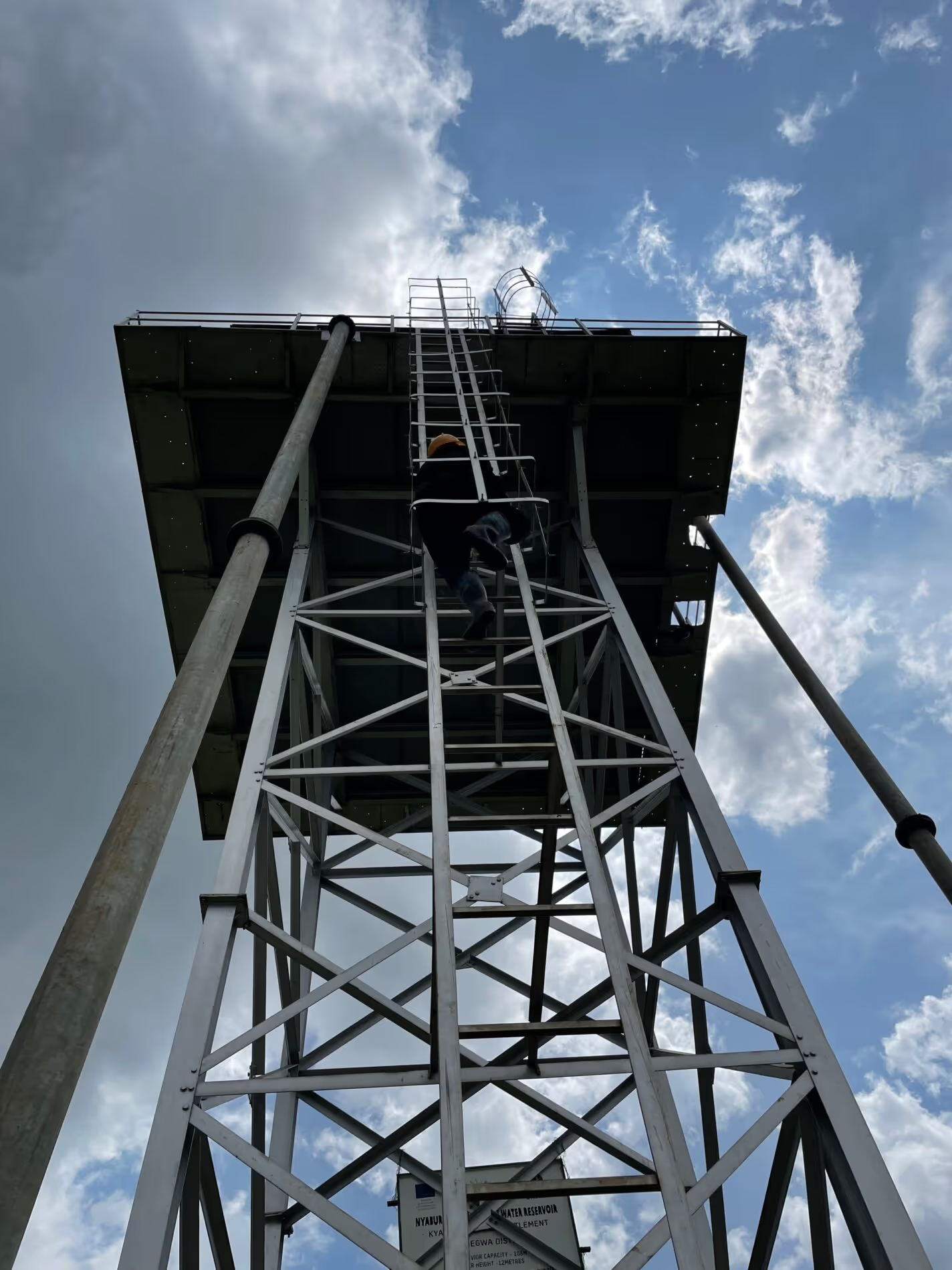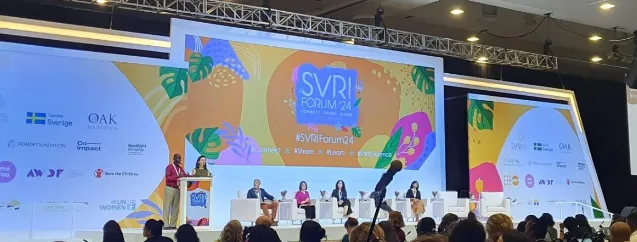First reflections – what have we learned so far?

In this short blogpost series, we are excited to share some of the initial learning from our HIF-funded WASH Evidence Challenge study in Uganda. Field data collection was carried out at the Kyaka II refugee settlement between May and August 2022. We were lucky to be working with a smart and dedicated field team in Oxfam’s Uganda office. This post, the third and final in this series, highlights some of our early findings and sets out some key lessons we’ve learned so far.
The main goal of our work at Kyaka II was to evaluate the SWOT in optimizing water safety of a treated surface water source, delivered by piped network and by water trucking. The results of the piped network data collection showed that, at baseline, for water that was stored in households for up to 12 hours, fewer than a quarter had a protective level of free residual chlorine. Without this protective FRC, stored drinking water is at risk of recontamination by waterborne pathogens. Two thirds of people surveyed reported storing water for up to 12 hours, and fewer than 1 in 10 stored water for longer than a day. Based on this information, and the paired water quality samples analysed, the SWOT recommended an FRC of at least 0.7mg/l at the tapstand to maintain water safety for up to 12 hours.
Taste and odour acceptance testing was trialled with groups of men, women, and children separately to determine the range of thresholds for FRC acceptability among different segments of the population. These tests revealed a large variation in perceptions, but in general there seemed to be good acceptance of FRC levels up to about 0.8mg/I, after which the taste and odour of chlorine was seen to be increasingly off-putting.
Based on these two findings, we recommended that the FRC at tapstands on the piped network should be maintained within the range of 0.7 to 0.8mg/l. Based on the SWOT’s modelling, this would achieve a predicted household water safety level of 65% (meaning that 65% of households are predicted to have sufficient FRC after 12 hours of household storage and use), compared to the baseline rate of <;25%.
For the water trucking study, data collected from areas served by water trucking showed a higher decay rate than those connected to the piped network, as we had anticipated. People in these areas also tended to store water for longer, with half of households storing water for longer than 12 hours. This created a challenge: the chlorine dose needed to achieve safe water for most households would lead to a chlorine taste that was unacceptable. This result, while disconcerting, demonstrated an important insight about this water supply system that was not previously understood—at the acceptable FRC level of 0.8mg/l, water would remain safe in the home typically for less than 9 hours before the residual chlorine protection disappeared. This highlights the important interplay between water delivery frequency, treatment parameters, and promotion of safe water chain, and prompted us to think about how we can expand the SWOT to provide broader kinds of water safety guidance beyond just FRC recommendations.
What were the key lessons we learned at Kyaka II?
There are three key lessons from this study that we will be taking forward as we continue to develop the SWOT:
- Chlorine decay in surface water-based systems is sensitive to a range of water parameters that, so far, have not been explicitly included in the SWOT’s modelling. By comparing the data from Kyaka II with that from previous field studies, we will develop modelling approaches that integrate a wider suite of parameters with the aim of improving the model’s performance across a range of water sources.
;
- In large water systems, the distribution of water points is a key determinant of household water safety and there is an opportunity to add a layer of geospatial analysis to the SWOT to help teams identify areas of a settlement where household water quality is more likely to be at risk.
;
- While the SWOT has so far focussed on adjusting chlorine dose as the primary ‘lever’ for controlling household water safety, this study demonstrates the importance of modelling chlorine decay alongside water storage behaviours and user perceptions. This expands the range of levers available to improve household water safety to include factors such as optimising pre-treatment to reduce chlorine decay rate, scheduling water system operations to ensure adequate contact time and reduce the duration of household storage, and the use of community engagement to increase taste and odour acceptance and promote hygienic water handling. In difficult use cases such as this, optimal water safety is more likely to be achieved with an integrated approach using multiple ‘levers’ than just one alone.
What comes next?
Field data collection at Kyaka II for this study is complete, but Oxfam will continue to use the SWOT as part of their ongoing water safety management plan at Kyaka II. As the study team continues to analyse the data collected from Kyaka II, we will be sharing further insights from this research to field partners and to the wider WASH research community. The field implementations at Kyaka II and feedback from our new users will help us identify and prioritise new features that we can integrate into the SWOT web application to make it more relevant and useful to teams managing water supplies in emergencies.
Our team is now focusing on how the SWOT can be used to ensure water safety in a health facility through a study at an MSF-supported hospital in Somaliland—another new use case for the SWOT. We look forward to sharing the findings from this site in a future post. More to come soon.
Stay updated
Sign up for our newsletter to receive regular updates on resources, news, and insights like this. Don’t miss out on important information that can help you stay informed and engaged.
Related articles



Explore Elrha
Learn more about our mission, the organisations we support, and the resources we provide to drive research and innovation in humanitarian response.